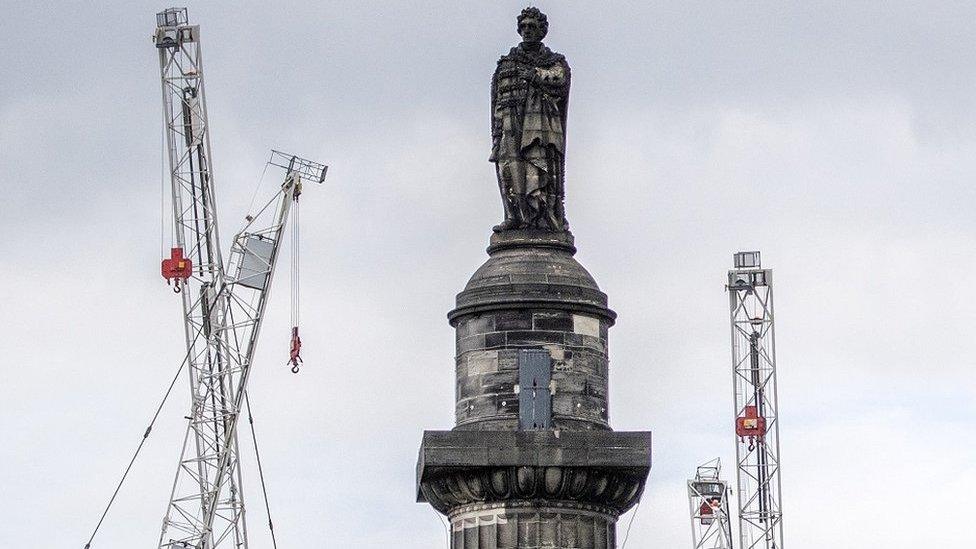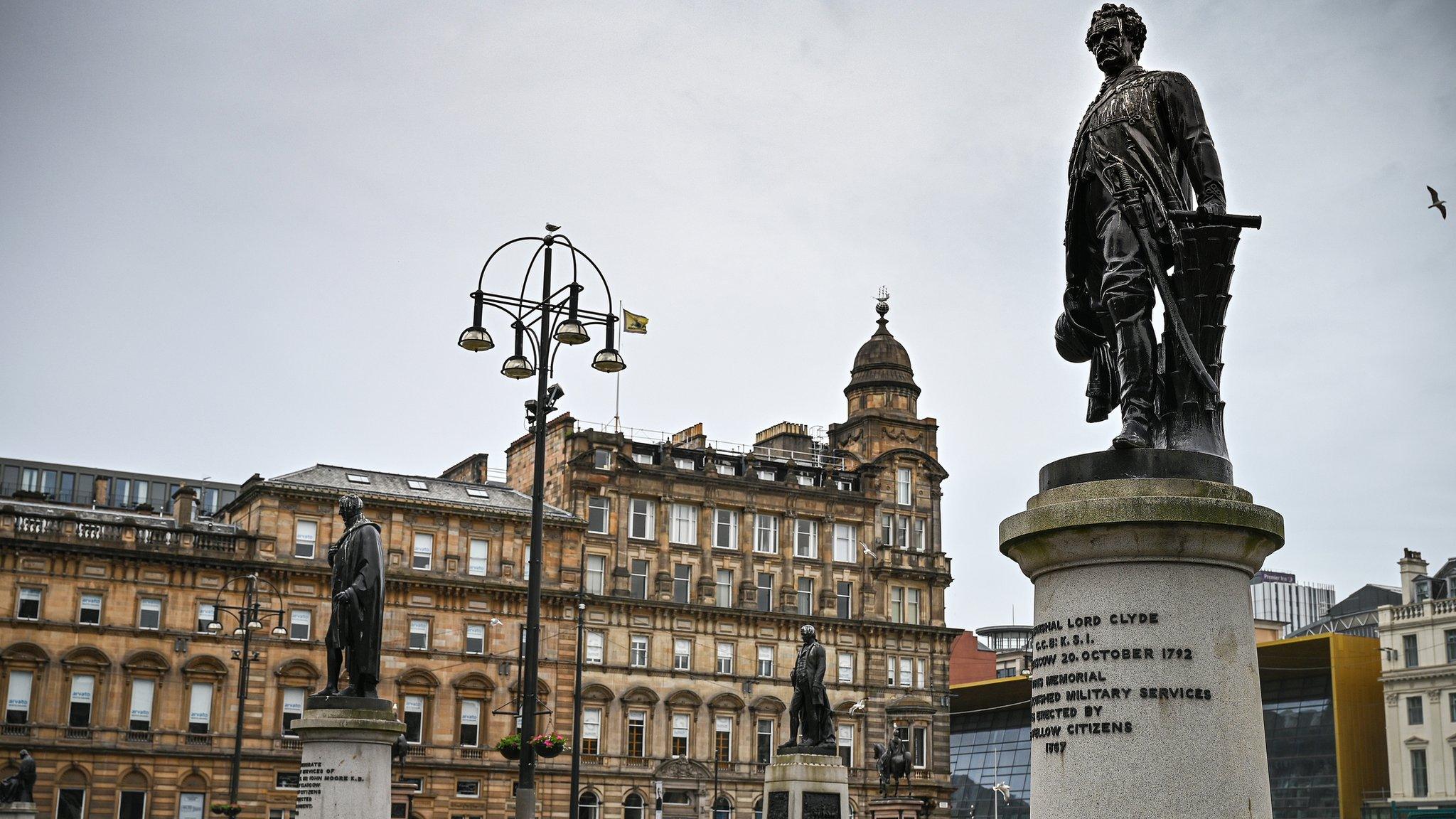Dundee's historical connections to slavery explored in new trail
- Published

Frederick Douglass escaped slavery in the US and gave a celebrated speech in Dundee in 1846
Dundee's historical links to slavery are being acknowledged and explored in a new map and city walking trail.
Breaking the Chains, external includes 28 locations connected to both slavery and the anti-slavery movement, including buildings, statues, and tombs.
Among them is the grave of Sir John Wedderburn, who owned or part-owned almost 1,000 slaves in Jamaica.
The trail also explores connections to the city's universities, parks and street names.

Councillor Georgia Cruickshank said she was not asking for history to be rewritten, but "told as it happened."
Research on the project was carried out as a result of actions from the city's Black History Working Group.
The group's chairwoman, Councillor Georgia Cruickshank, said she was not asking for history to be rewritten.
"But I would like history to be told, as it happened," she said.
"This may create a better understanding for people to acknowledge what has gone in the past and how we can make things better in the future."

The Wedderburn family tomb in the Howff cemetery is featured in the trail
The trail begins at Dundee University's Tower Building.
The university was founded as University College Dundee in 1881, and its main benefactor was Mary Ann Baxter, whose wealth came from the family linen company Baxter Brothers & Co.
One of their most popular products was osnaburg, a cheap and coarse linen which was used to clothe enslaved people in plantations in the Caribbean and the United States.
Sir David Baxter, who gifted Baxter Park to the city, began his career as manager of Dundee Sugar House before joining the family linen business in the 1830s.
By that time Dundee linen was already being exported to plantations in Jamaica, Haiti, St Thomas, Cuba, Brazil and the US, all of which depended on an enslaved workforce.

University College Dundee's main benefactor was Mary Ann Baxter, whose wealth came from the family linen company
The site of the former Dundee Trades Hall building, which is now home to an opticians, features on the tour.
It was an early meeting place for the Forfarshire Chamber of Commerce, which in 1830 refused to support the abolition of slavery, claiming it was a moral issue outwith its remit.

The site of the former Dundee Trades Hall features on the tour.

The site of the former Dundee Trades Hall is now occupied by an optician
Dundee University museum curator Matthew Jarron co-authored the new trail map with Leisure and Culture Dundee's Erin Farley.
Mr Jarron said: "Hopefully we've tried to show just how many of the institutions that we take for granted in the city today ultimately can connect back to money that came via slavery.
"So our museums, our libraries, or universities or hospitals, you could name pretty much anything and there will be a connection somewhere.
"So it's definitely not long-dead history."

A plaque marks the location in West Bell Street where Frederick Douglass made his speech
Among the links to anti-slavery is the building at 1A West Bell Street, formerly Bell Street UP Church.
Its basement hall was the location of a celebrated speech in 1846 by Frederick Douglass, who had escaped slavery in the US to become a renowned orator and social reformer.
The map is accompanied by an online resource, featuring places elsewhere in Dundee with links to the slave trade, including streets named after slave owners or their families.
Tullideph Road and Tullideph Street commemorate Walter Tullideph, who purchased the estates of Baldovan and Balgay after returning to Scotland from Antigua in around 1740, where he had amassed a large fortune.
The houses on those estates ultimately became Strathmartine Hospital and Royal Victoria Hospital.

Matthew Jarron and Erin Farley co-authored the Breaking the Chains trail map
Ms Farley said: "We were all quite aware of Dundee's relationship with India through through the jute industry.
"But this earlier part of Dundee's textile history is still kind of comparatively less well known, and less frequently spoken about.
"Finding out just how how involved the links between the linen industry here and the plantations was may be not a total shock, but still it kind of just really hit home how deep those connections were."

Find more stories from Dundee:

Related topics
- Published30 August 2022

- Published30 March 2022

- Published9 June 2020
